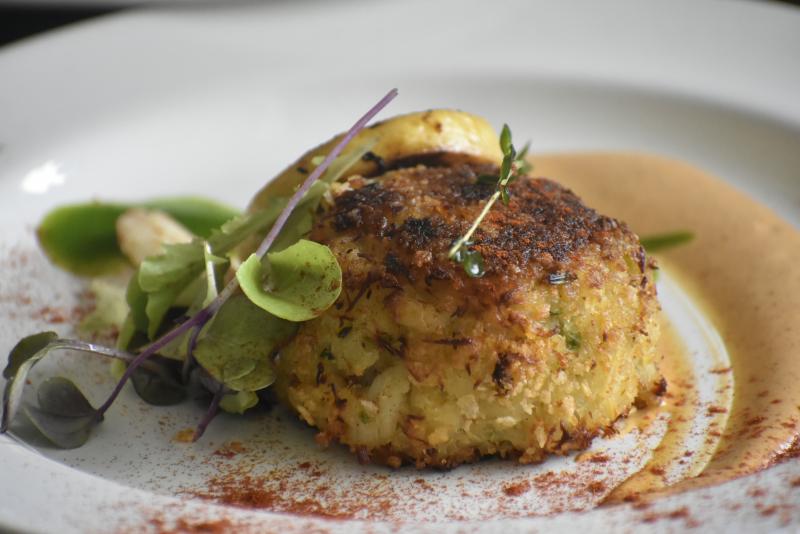
ANNAPOLIS, Md. – The annual Blue Crab Advisory Report, released by the Chesapeake Bay Program and developed by the Chesapeake Bay Stock Assessment Committee, finds that the overall Chesapeake Bay blue crab population is not being overfished and is not depleted. The blue crab population in the Bay—which varies naturally from year to year—decreased from 594 million in 2019 to 405 million in 2020.
The report includes expert analysis of data from the annual Bay-wide winter dredge survey (released earlier this year by the Maryland Department of Natural Resources and Virginia Institute of Marine Science) and harvest estimates from recent years to provide an in-depth picture of the Chesapeake’s blue crab population and to make suggestions for any needed changes to regulations.
In the Chesapeake Bay, the blue crab fishery is managed by the Maryland Department of Natural Resources, Virginia Marine Resources Commission and Potomac River Fisheries Commission. Each jurisdiction sets its own regulations. Decision makers and resource managers in each area refer to the Blue Crab Advisory Report as they make any changes to regulations.
To ensure continued resiliency of the population, resource managers focus on maintaining a robust stock of female crabs. The estimated population of 141 million female blue crabs in 2020 was a decrease from 191 million in 2019. This number is above 70 million, which is the minimum acceptable level for female blue crabs in the Bay, but lower than the target of 215 million. In the 2019 blue crab fishing season, 17% of all female crabs were harvested—safely below both the target (25.5%) and threshold (34%) levels for the twelfth consecutive year.
The juvenile blue crab population—crabs that will grow to harvestable size this fall—was estimated to be 185 million, down from 324 million in 2019 and below the long-term average of 224 million. The number of crabs that die in between fall and spring (often due to cold and/or freezing water temperatures)—the overwintering mortality—was 0.36%, likely due to the warm 2019-20 winter. This is the lowest overwintering mortality rate observed since 1996; the average is 4.53%.
The 2020 Advisory Report recommends:
• Substantial changes in management are not necessary; working to maintain a robust spawning stock should remain the goal.
• Jurisdictions should implement ways to more accurately track commercial and recreational harvests, such as electronic reporting and harvest validation. This would support even more precise management.
• To improve scientific knowledge, the Chesapeake Bay Stock Assessment Committee would like to develop a spatially explicit blue crab population simulation model to help evaluate management performance under different hypothetical situations.
The Blue Crab Advisory Report is developed by the Chesapeake Bay Stock Assessment Committee, a group of experts from state and federal agencies and academic institutions that is organized under the Chesapeake Bay Program Sustainable Fisheries Goal Implementation Team.
Facts
The Blue Crab Advisory Report supports the blue crab abundance and blue crab management outcomes outlined in the Chesapeake Bay Watershed Agreement. The blue crab abundance outcome is designed to maintain a sustainable blue crab population, while the blue crab management outcome promotes collaboration between the Chesapeake Bay Program and stakeholders in working toward a stable and productive blue crab fishery.
Issues
Blue crab populations can vary naturally from year to year, based on weather, water temperature and other environmental conditions, as well as on how many are caught. Commercial fishermen rely on having a steady supply of crabs in the Bay, and recreational crabbers enjoy being able to catch crabs. Using science such as that included in the Blue Crab Advisory Report enables resource managers to make informed decisions that promote coordination across the jurisdictions and a healthy supply of crabs for everyone.
Importance
Blue crabs are an important part of the ecology and economy of the Chesapeake Bay. They serve as food sources for the Bay’s fish and bird populations and support a large recreational and high-value commercial fishery. Commercial fishermen harvested approximately 61 million pounds of blue crabs from the Bay and its tributaries in 2019--up slightly from roughly 55 million pounds in 2018. Recreational crabbers harvested roughly 3.8 million pounds in 2019, similar to the previous year.
Quotes
“Once again, the blue crab experts at the Chesapeake Bay Stock Assessment Committee have developed a robust report that helps the jurisdictions make smart decisions about the blue crab fishery. While the report suggests no immediate changes to how blue crabs are managed here in the Chesapeake, I appreciate the recommendations on ways we can continue to advance the science of blue crab management.”
• Sean Corson, Director, NOAA Chesapeake Bay Office and Chair, Sustainable Fisheries Goal Implementation Team
“While there are some expected fluctuations, our collective management efforts continue to enable the population to stay resilient and sustainable. Maryland blue crabs remain an iconic part of our heritage and our environment.”
• Jeannie Haddaway-Riccio, Secretary, Department of Natural Resources, State of Maryland
“This report shows us the variable nature of the blue crab population, so we must continue investing in Chesapeake Bay water quality and habitat restoration to ensure those fluctuations stay within a healthy range.”
• Matthew J. Strickler, Secretary of Natural Resources, Commonwealth of Virginia
“Our ever-improving knowledge of the science guiding blue crab management—coupled with conservative female management measures and accountability—continue to allow us to maintain a sustainable fishery, both ecologically and economically.”
• Marty Gary, Executive Director, Potomac River Fisheries Commission
The Link LonkJuly 01, 2020 at 10:23PM
https://ift.tt/2ZojiUu
2020 Blue Crab Advisory Report Released | thebaynet.com - Bay Net
https://ift.tt/2MkGRbk
Crab

No comments:
Post a Comment